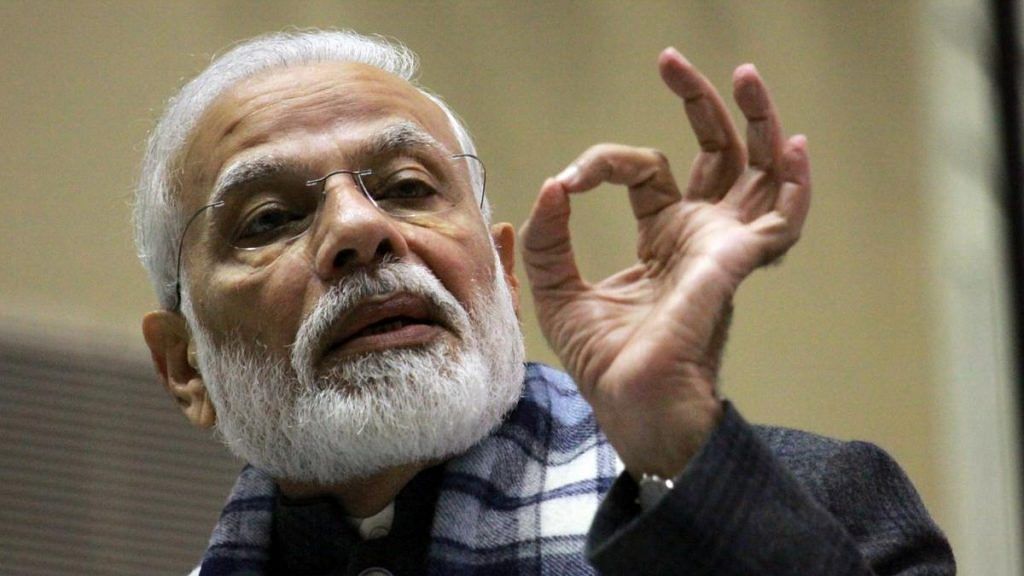It’s been nearly a year since Narendra Modi was voted back as prime minister with an unwavering mandate. The first year of his second term has been full of duds — a crawling economy, which his government has struggled to tackle, job losses, no big-bang welfare measures unlike the first term, no marquee policy initiative to capture any segment’s imagination.
And yet, this has been an out-and-out Narendra Modi year, one that has given him further political fillip.
Since assuming office on 30 May 2019, Narendra Modi has managed to deliver on a string of Bharatiya Janata Party (BJP)’s key promises — scrapping of Jammu and Kashmir’s special status through the dilution of Article 370, bringing in the polarising Citizenship (Amendment) Act, enacting the legislation on triple talaq, and ensuring his government sets up a trust to build the Ram temple in Ayodhya.
Thus, while the year has been disastrous on the economic front — exposing Modi and his cabinet’s hollow governance abilities and their complete lack of grasp on the economy — the political optics have remained in the spotlight.
And now, amid the unprecedented Covid-19 crisis, Modi has got a tailor-made opportunity to emerge as the ‘saviour leader’.
This also means that nothing will come to the opposition easily, and it will have to work harder to bring ‘Brand Modi’ down.
Also read: With Covid-19, not just air quality, but India’s politics also has come out of red zone
Modi’s year that was
Bad economic news is what dominated this year of the Modi government. In January 2020, the National Statistical Office under the Ministry of Statistics and Programme Implementation predicted that the Indian economy would grow at an 11-year low of 5 per cent in 2019-20.
Modi and his team clearly seemed out of their depth in the face of the slowdown, weighed down by a poor bench strength, lack of talent, and inability to come up with solutions. His previous decisions, like the demonetisation of 2016, continued to have ripple effects, with people losing jobs.
The year was completely devoid of what defined Modi’s first term as PM, and what contributed immensely to his return — a no-holds-barred emphasis on welfare and pro-poor schemes. Thus, while 2014-2019 was about Ujjwala, rural housing, Jan Dhan, Ayushman Bharat, Saubhagya, Swachh Bharat, creation of ‘model villages’ — several of which were launched early on in his stint, the past year has seen no imagination on the welfare front. Moreover, even the focus on rural outreach and the existing pro-poor initiatives has been far less prominent.
But Modi has still had a politically ‘successful’ year. Successful because he has delivered what his core constituency and the majoritarian Hindutva-wielding and ultra-nationalist voter wants.
Thus, diluting Article 370 has helped Modi communicate to his voters that he has ‘integrated’ Kashmir into India. With the CAA, he has ensured an ‘Akhand Bharat’ and brought Hindus across the neighbourhood under one umbrella. The Triple Talaq law means Modi can tell Hindus he has ‘saved’ Muslim women from the ‘injustice’ of their religion. And, of course, the Supreme Court verdict on Ayodhya came as a boost, particularly with the onus to form a trust that will oversee the construction of the temple lying on his government.
In a sense, Modi has done very little in the first year of his second term — except bulldoze his way through with contentious legislation as well as decisions, while ignoring legitimate concerns among several quarters. And yet, it is this steamrolling that has given Modi the optics he desired, further boosting his political image.
Also read: Enough of mann ki baat Modiji. Covid-19 war is the time to take some questions
The Covid-19 opportunity
As the cliche goes, in every crisis lies an opportunity. For Narendra Modi, the coronavirus pandemic has become a way to re-emphasise the image he wants to project of himself — a statesman who can take everyone along and steer the nation through a tough phase.
This pandemic can be a double-edged sword — going horribly wrong for political leaders who are seen to be dealing with it ineffectively, much like Shivraj Singh Chouhan in Madhya Pradesh.
But for Modi, the handling of the pandemic seems to be working in his favour so far, and has also helped deflect attention from a sluggish economy. Any economic downturn can now be blamed on the coronavirus, a politically convenient approach.
The Covid-19 crisis has given him yet another chance to be the showman, and dominate India’s political landscape.
Modi’s first year report card has many Cs and Ds as far as governance, policy making and the economy are concerned, but the political optics — which is all that matters to him — are straight As.
Views are personal.
